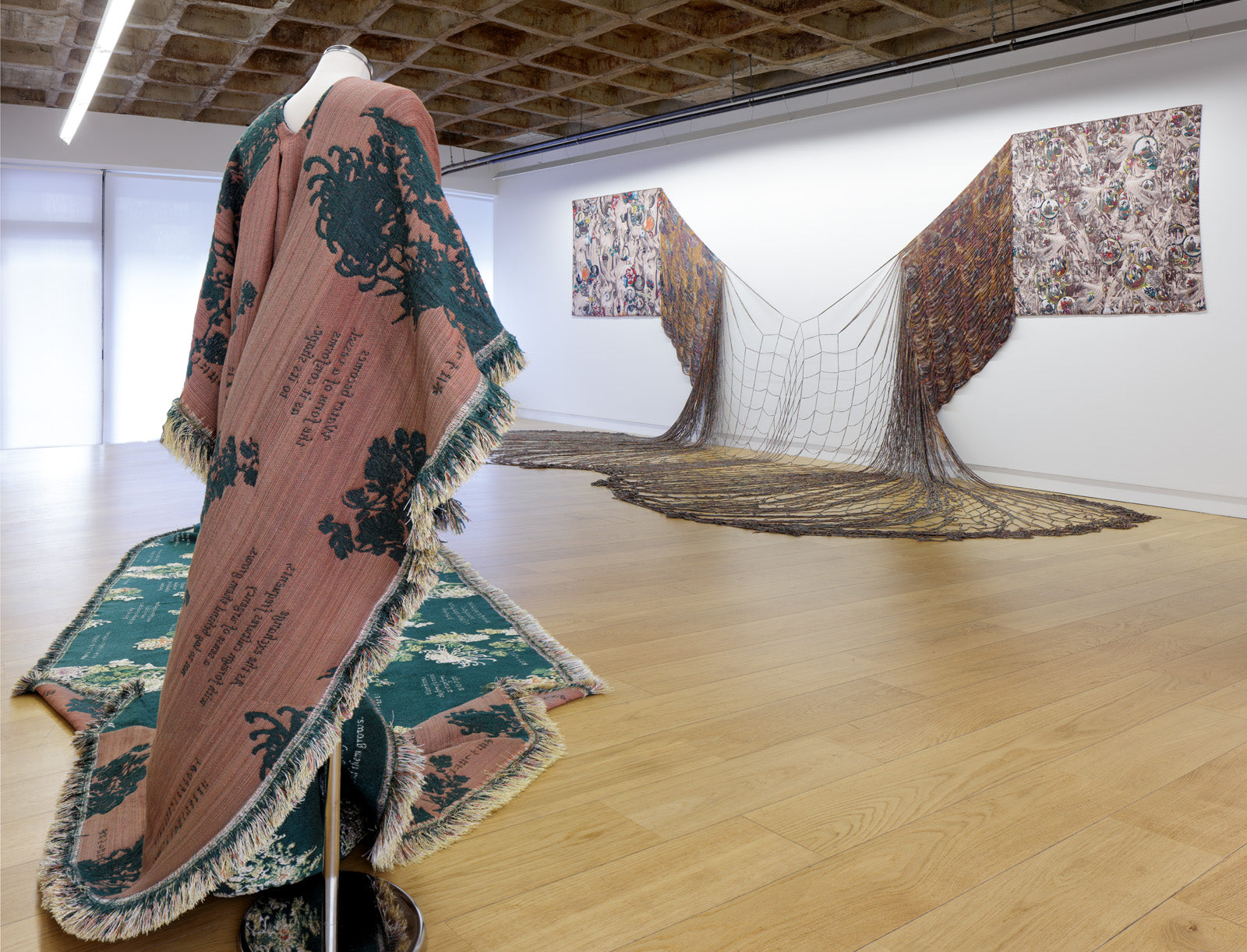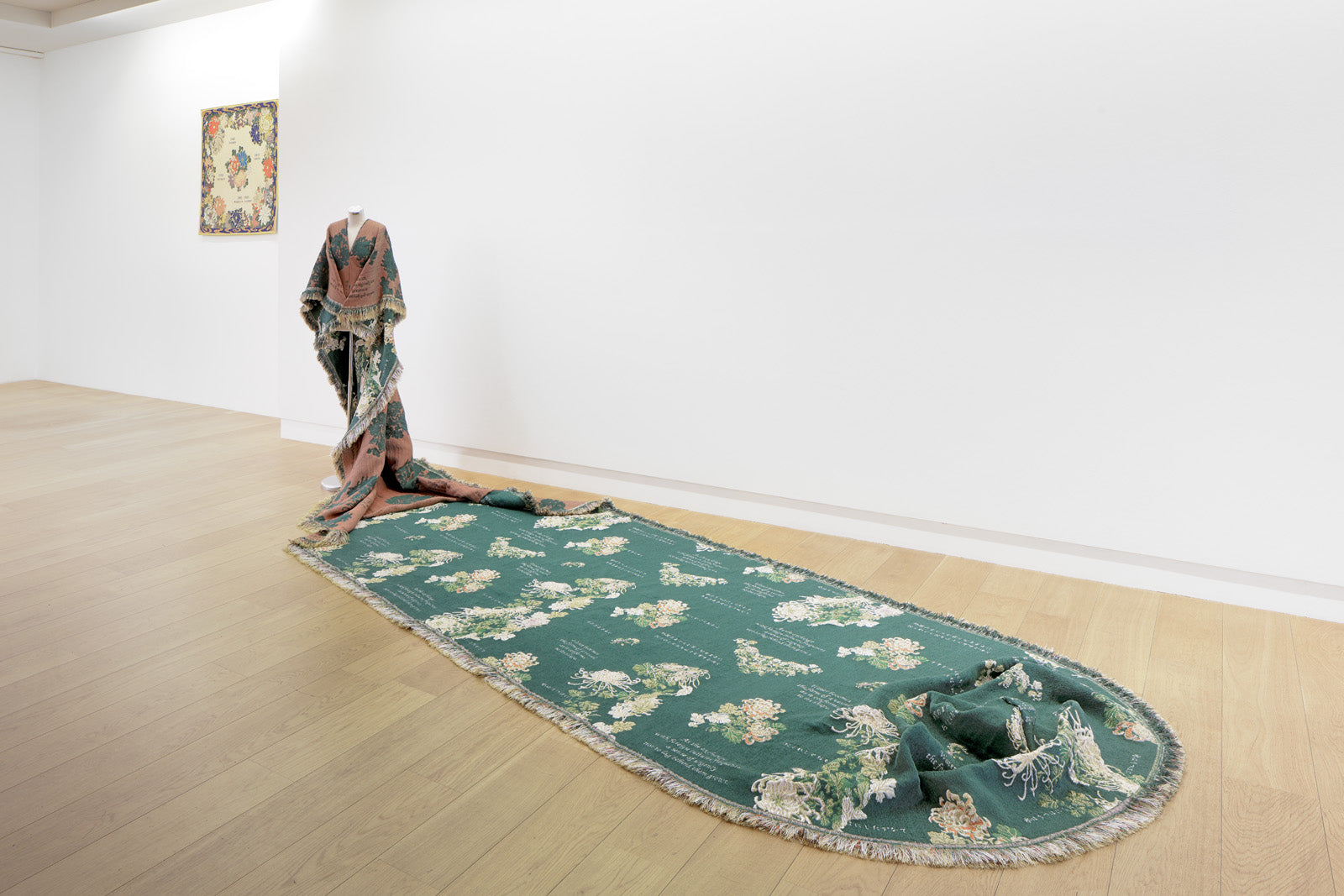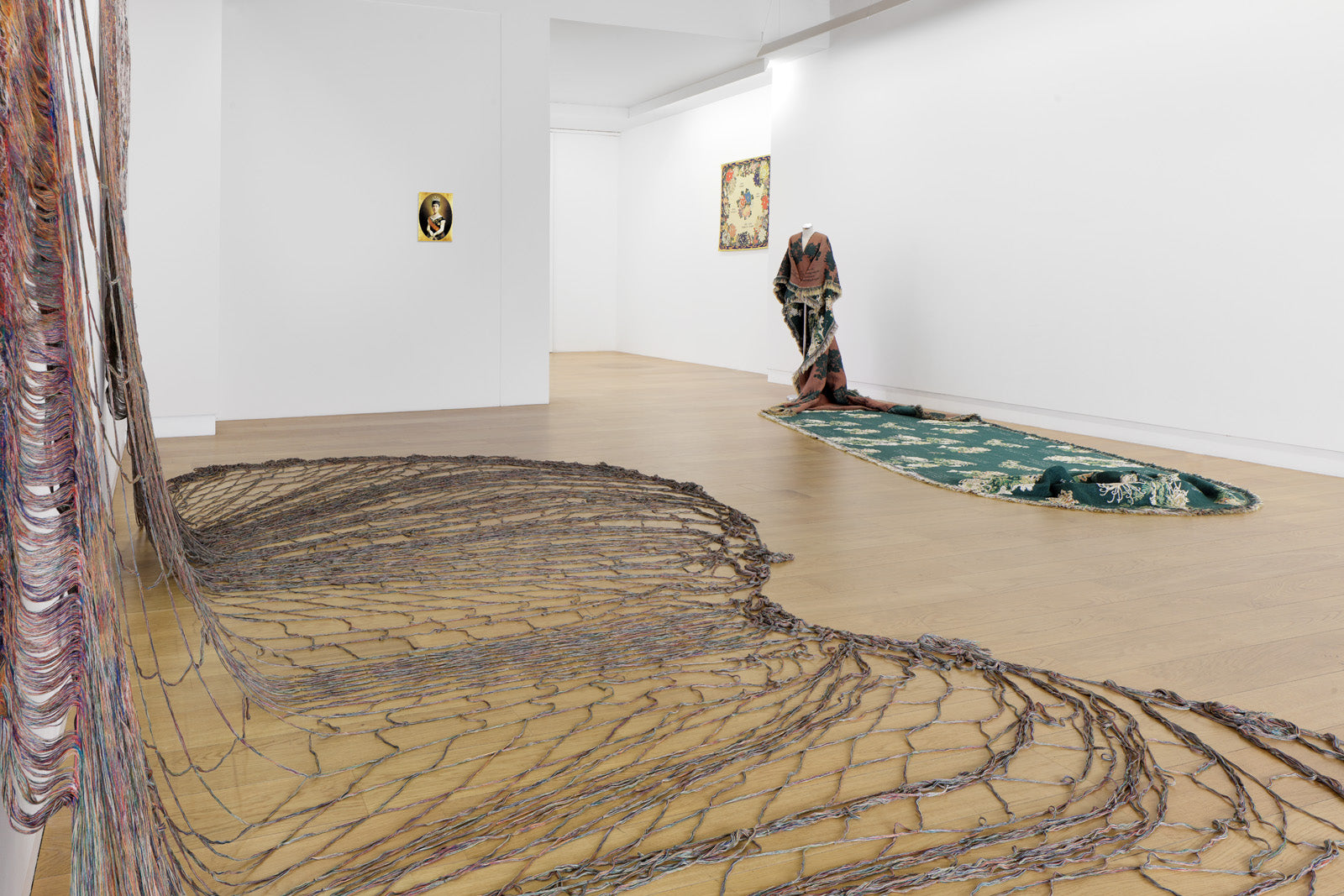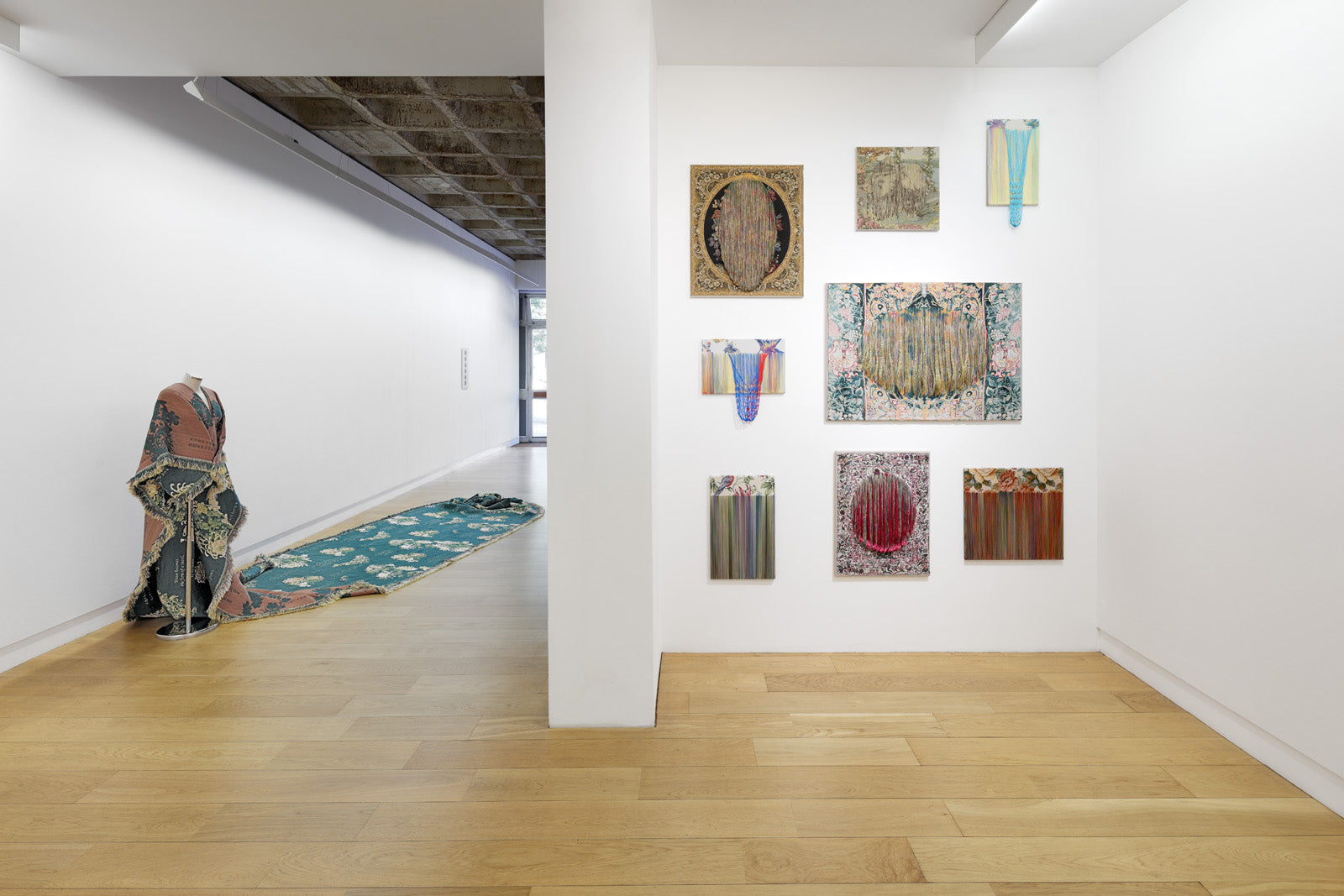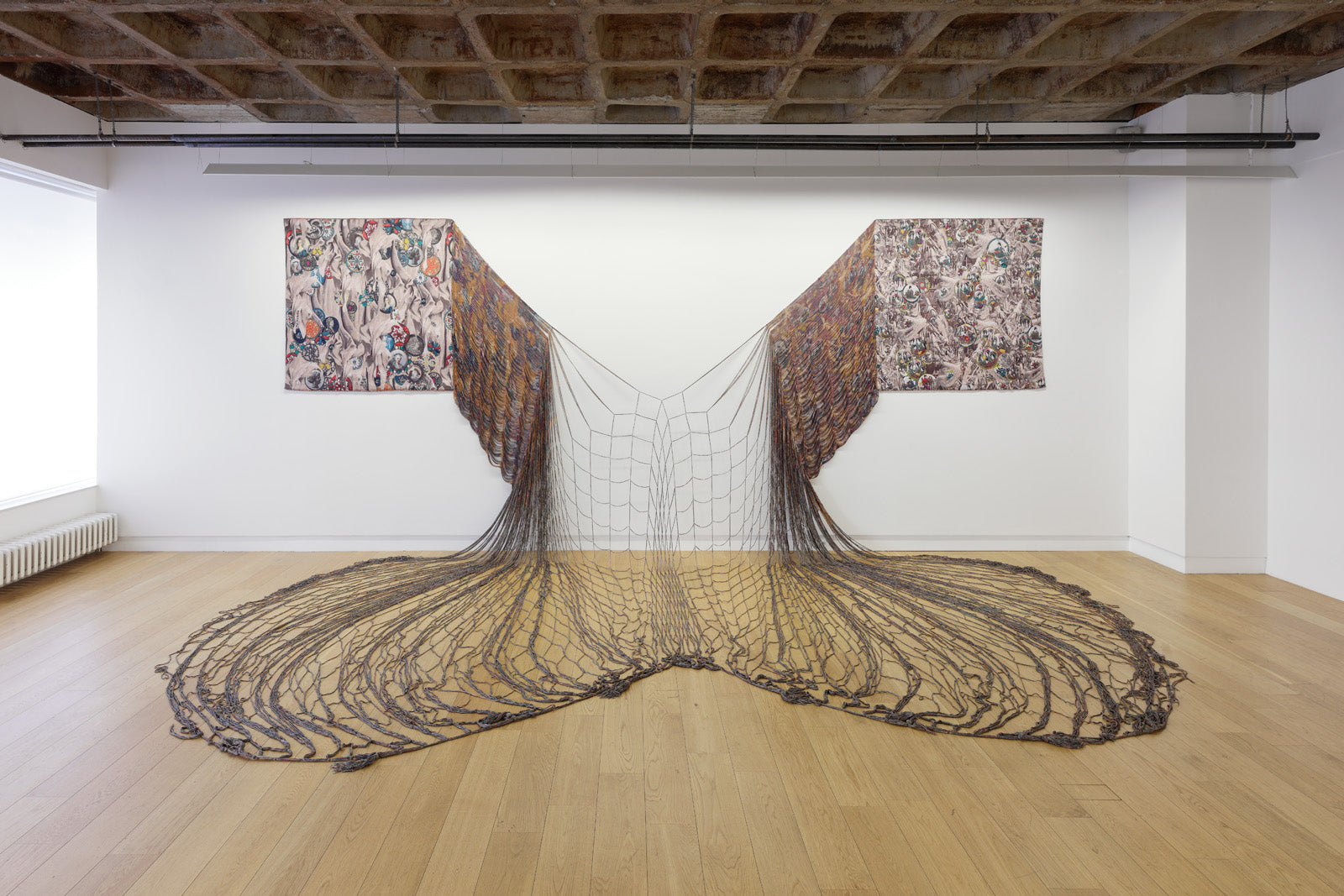Press Release ( PDF Download: DE / EN )
Galerie Michael Janssen is pleased to present Aiko Tezuka’s new exhibition “Dear Oblivion – 親愛なる忘却へ” curated by Sachiko Shoji of the Fukuoka Art Museum, Japan. Organized on the occasion of Berlin Art Week 2019, “Dear Oblivion” is the artist’s second solo exhibition in the gallery’s space, and it features works created in collaboration with the Textile Lab at Textile Museum in Tilburg (the Netherlands), the Kyoto Costume Institute (KCI), Kawashima Selkon Textiles and Kyoritsu Women‘s University Museum.
Tezuka’s creative practice, though grounded in painting, has long found expression in intricate fabric installations and objects that explore themes related to the culture, industry, and history of the global textile enterprise. Processes of weaving and unweaving function to characterize both the artist‘s trademark aesthetic and her particular thematic preoccupations; as she articulates in her artist’s statement, she is “interested in loosening up such readymade narratives to unravel forgotten histories or discover new plotlines,” and in so doing “facilitate the reexamination of the subjective nature of time and the process of metamorphosis.” In “Dear Oblivion,” Tezuka further explores these ideas with a critical emphasis on the deconstruction, reexamination, and reconstruction of the relationships between past and present, Japan and Western Europe, and art and craft.
One of her newest works, Flowery Obscurity (The Night Watch) (2019), translates Rembrandt van Rijn’s The Night Watch (1642) into weaving and modifies the image with swaths of ornamental Chintz, a patterned fabric of Indian ori¬gin made popular in both Japan and Western Europe via its distribution by the Dutch East India Company in the 17th century. In Tezuka’s version of The Night Watch, the Chintz replaces Rembrandt’s famed light rays to disrupt both the picture plane and the stability of the painting’s rarely contested “Europeanness.” Thus, the storied past of the master¬piece is intertwined with the history of maritime trade between the Dutch and countries in East Asia; namely, Japan, which closed its borders from the mid-seventeenth century until the mid-nineteenth century to all but China and Hol¬land. The “obscurity” in the title refers to the dimming of the painting caused by discoloration over time, and it refers to the cultures of East Asia—represented by the Chintz—which were often misunderstood by European society during Rembrandt’s age and the 220 years that Japan remained in isolation.
The evolution of this misunderstanding and its impact, known as orientalism, is an overarching exhibition theme. For example, A Study of Necessity (Satsuma-Buttons and Self-Orientalism) -03 and Rewoven in Kyoto, After 100 years -03 (both 2019) use the weft and the warp to illustrate how the East-West exchange of luxury goods influenced the two hemispheres’ perceptions of and interest in each other, which led to a commercially driven synthesis of styles, often at the expense of cultural identities in the East. And the namesake Dear Oblivion (A Study of Empress Haruko) (2019) is an homage to the Empress of Meiji Japan, who navigated old-world/new-world international politics through couture and poetry.
The acknowledgement of labor as inherent to the making and distribution of textiles, whether in the past or in the pre¬sent, is crucial to understanding Tezuka’s practice. Not only is she an intense laborer herself, but her works speak of labor as a human condition and a frequent human rights concern. Do you remember me—I was about to forget (2018), her machine-embroidered portraits of Meiji-era Japanese immigrants forced into underpaid labor on Hawaiian sugar plantations, is the most specific and haunting example of her engagement with this issue.
Concurrent to “Dear Oblivion – 親愛なる忘却へ” at Galerie Michael Janssen, Tezuka is presenting a near parallel exhi¬bition titled “Dear Oblivion,” at Spiral, an arts and culture center in Tokyo. Although the project is the same, its Tokyo iteration further elaborates Tezuka’s conceptual investigations of East and West, as geographic circumstances and cultural context inevitably change the public’s understanding of the work.
One can find more information on these artworks in “Becoming a Thread and a Needle: Aiko Tezuka‘s Thought and Method,” by Sachiko Shoji and “Art and History Intertwined: On Aiko Tezuka’s Project Rembrandt x Chintz,” by Rijksmuseum curator Chin-Ling Wang. Both texts were written on the occasion of this exhibition and are available for reading in the gallery.
Text by Patrick J. Reed





Aiko Tezuka - Dear Oblivion (親愛なる忘却へ), Installation views, Galerie Michael Janssen, Berlin, 2019

